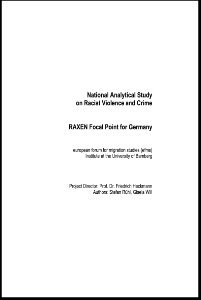By Equal Justice Initiative
In 1865, after two and a half centuries of brutal enslavement, Black Americans had great hope that emancipation would finally mean real freedom and opportunity. Most formerly enslaved people in the United States were remarkably willing to live peacefully with those who had held them in bondage despite the violence they had suffered and the degradation they had endured. Emancipated Black people put aside their enslavement and embraced education, hard work, faith, and citizenship with extraordinary enthusiasm and devotion. By 1868, over 80 percent of Black men who were eligible to vote had registered, schools for Black children became a priority, and courageous Black leaders overcame enormous obstacles to win elections to public office. The new era of Reconstruction offered great promise and could have radically changed the history of this country. However, it quickly became clear that emancipation in the United States did not mean equality for Black people. The commitment to abolish chattel slavery was not accompanied by a commitment to equal rights or equal protection for African Americans and the hope of Reconstruction quickly became a nightmare of unparalleled violence and oppression. Between 1865 and 1876, thousands of Black women, men, and children were killed, attacked, sexually assaulted, and terrorized by white mobs and individuals who were shielded from arrest and prosecution. White perpetrators of lawless, random violence against formerly enslaved people were almost never held accountable—instead, they frequently were celebrated. Emboldened Confederate veterans and former enslavers organized a reign of terror that effectively nullified constitutional amendments designed to provide Black people equal protection and the right to vote. In a series of devastating decisions, the United States Supreme Court blocked Congressional efforts to protect formerly enslaved people. In decision after decision, the Court ceded control to the same white Southerners who used terror and violence to stop Black political participation, upheld laws and practices codifying racial hierarchy, and embraced a new constitutional order defined by “states’ rights.” Within a decade after the Civil War, Congress began to abandon the promise of assistance to millions of formerly enslaved Black people. Violence, mass lynchings, and lawlessness enabled white Southerners to create a
regime of white supremacy and Black disenfranchisement alongside a new economic order that continued to exploit Black labor. White officials in the North and West similarly rejected racial equality, codified racial discrimination, and occasionally embraced the same tactics of violent racial control seen in the South.
It was during Reconstruction that a century-long era of racial hierarchy, lynching, white supremacy, and bigotry was established—an era from which this nation has yet to recover. Most Americans know very little about the Reconstruction era and its legacy. Historians have frequently overlooked this critical 12-year period that has had profound impact on life in the United States. Our collective ignorance of what happened immediately after the Civil War has contributed to misinformed stereotypes and misguided false narratives about who is honorable and who is not and has allowed bigotry and a legacy of racial injustice to persist. In 2015, the Equal Justice Initiative issued a new report that detailed over 4,400 documented racial terror lynchings of Black people in America between 1877 and 1950. We now report that during the 12- year period of Reconstruction at least 2,000 Black women, men, and children were victims of racial terror lynchings. Thousands more were assaulted, raped, or injured in racial terror attacks between 1865 and 1876. The rate of documented racial terror lynchings during Reconstruction is nearly three times greater than during the era we reported on in 2015. Dozens of mass lynchings took place during Reconstruction in communities across the country in which hundreds of Black people were killed. Tragically, the rate of unknown lynchings of Black people during Reconstruction is also almost certainly dramatically higher than the thousands of unknown lynchings that took place between 1877 and 1950 for which no documentation can be found. The retaliatory killings of Black people by white Southerners immediately following the Civil War alone likely number in the thousands. EJI presents this report to provide context and analysis of what happened during this tragic period of American history and to describe its implications for the issues we face today. We believe our nation has failed to adequately address or acknowledge our history of racial injustice and that we must commit to a new era of truth-telling followed by meaningful efforts to repair and remedy the continuing legacy of racial oppression. We hope this report sparks much needed conversation and encourages communities to join us in the important task of advancing truth and justice.
Montgomery, AL Equal Justice Initiative, 2021. 119p.





